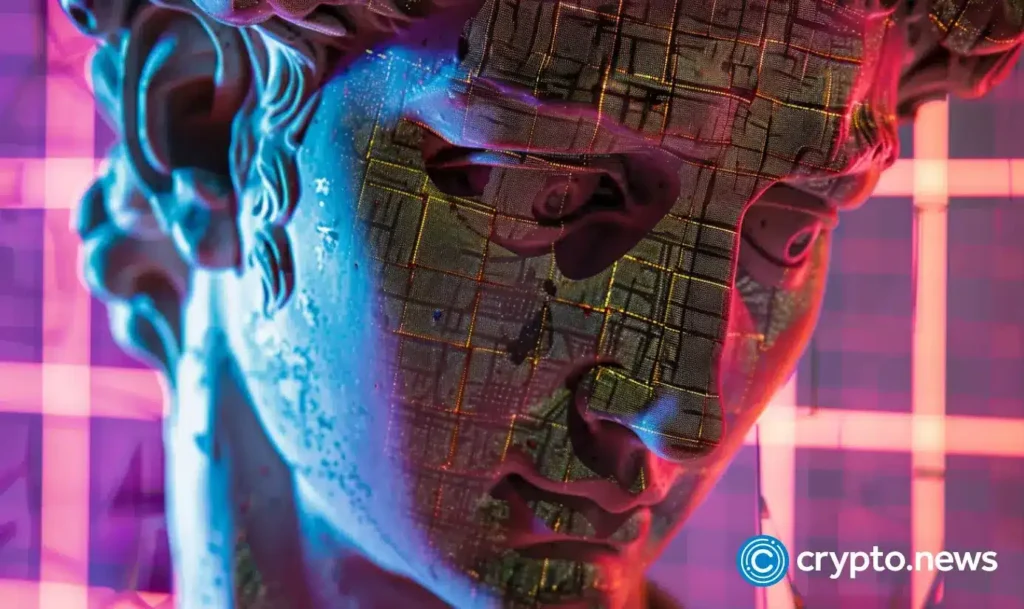Because the crypto market prepares for turbulence amid the tariff wars, the NFT market appears to be in a worse place.
Buying and selling volumes are declining and marketplaces shutting down.
The once-hyped world of non-fungible tokens, which analysts as soon as boldly projected may balloon to over $264 billion by 2032, now appears to be limping alongside. Weekly buying and selling volumes have been falling like dominoes for weeks, scaring off capital and dragging the market again to ranges not seen since its explosive 2020 debut.
Blockchain analytics agency DappRadar shows that buying and selling volumes in 2021 had been driving excessive, hitting practically $3 billion.
Quick-forward to the primary quarter of 2025. That determine has nosedived 93% to simply $23.8 million as “energetic merchants have vanished,” blockchain analyst Sara Gherghelas famous.
“This fast development coincided with world shifts pushed by the COVID-19 pandemic, accelerating the adoption of digital platforms and pushing artists to discover progressive strategies of partaking with their audiences. Nevertheless, three years later, the hype round Artwork NFTs has considerably decreased.”
Sara Gherghelas
The information backs her up. In 2024, buying and selling quantity dropped practically 20% from the 12 months prior, whereas complete gross sales declined 18%. As Gherghelas put it in her 2025 analysis, it was “one of many worst-performing years since 2020.”
Nonetheless speculative property
In an interview with crypto.information, OutsetPR’s authorized officer Alice Frei implied that regulation remains to be a large number as “governments are nonetheless undecided on classify NFTs.”
Within the U.S., they’re usually handled like securities, that means platforms should stroll a authorized tightrope. Within the U.Ok., they’re seen extra like collectibles underneath mental property regulation.
“These are examples of main nations with clear cryptocurrency rules; in lots of different nations, the scenario is much more unsure. This lack of regulatory readability creates an setting that’s ripe for fraud and erodes investor confidence. Till there may be extra consistency, NFT adoption will stay stagnant.”
Alice Frei
Frei additionally highlighted a deeper difficulty: past the worlds of cryptocurrency and gaming, NFTs are nonetheless “attempting to show that they provide actual worth.”
“In principle, they might revolutionize a number of industries — suppose live performance tickets that stop scalping, digital IDs for on-line verification, or property deeds saved on the blockchain. However in apply, most NFTs are nonetheless largely speculative property.”
Alice Frei
Talking of gaming, the place NFTs have essentially the most potential for mainstream use, their adoption can be struggling, Frei identified, recalling that Ubisoft’s Project Quartz, an try and combine NFTs into AAA video games, was met with “resistance from gamers, forcing the corporate to close it down.”
Frei notes that players are “hesitant about digital property that really feel extra like forex than a real addition to their expertise.”
Revolving door
If the information wasn’t already bleak, March introduced extra dangerous information: a string of market shutdowns added gasoline to the hearth. Amongst them, South Korean tech big LG shut down its LG Artwork Lab, which was launched simply three years in the past on the top of the NFT mania. The corporate didn’t share detailed causes, solely saying that “it’s the proper time to shift our focus and discover new alternatives.”
Only a week later, X2Y2 — a former OpenSea rival that when boasted $5.6 billion in lifetime quantity — additionally ceased its operations, citing a “90% shrinkage of NFT buying and selling quantity from its peak in 2021” and struggles to stay aggressive within the house.
Then got here Bybit. The crypto alternate, still reeling from a $1.46 billion theft linked to North Korea-affiliated hackers, quietly closed its platform.
Emily Bao, head of web3 at Bybit, stated the choice would enable the corporate to “improve the general consumer expertise whereas concentrating on the following era of blockchain-powered options.”
Amid the wave of closures, Frei says the NFT market now “looks like a revolving door.”
“Take Bored Ape Yacht Membership, for instance – as soon as the top of NFT standing, its costs have dramatically dropped. On the peak, a single Bored Ape bought for $400,000, however now some are barely fetching $50,000. The issue lies in the truth that many NFT initiatives depend on hype relatively than precise utility. If individuals can’t see long-term worth, they’re unlikely to return.”
Alice Frei
Final hope
Coinbase, too, appears to be pulling again. Whereas it hasn’t formally shut down its NFT platform, all indicators recommend it’s shifting focus. Throughout an earnings name in early 2023, President and COO Emilie Choi indicated that the corporate sees “medium and long-term alternatives” in NFTs. However its actual focus appears to be behind Base, its layer-2 blockchain community.
Coinbase declined to touch upon its place as NFT exercise continues to say no, regardless of a number of requests from crypto.information.
The OutsetPR authorized officer thinks that with the market’s present trajectory, smaller platforms are unlikely to climate the storm. “Smaller platforms will proceed to close down, leaving only some dominant gamers like OpenSea and Blur,” she stated.
She defined that the shift is being pushed by two main forces. First, tighter rules are on the horizon, which is able to doubtless convey an finish to the “Wild West days of NFTs.” Second, the gaming sector could supply NFTs a lifeline—however it’s nonetheless a slim one. As Frei places it, gaming could also be NFTs’ “final hope,” although builders will nonetheless have to keep away from “pay-to-win mechanics that would flip gamers away.”
“The hype is over. If NFTs are to outlive, they might want to show that they provide extra than simply costly footage on the blockchain,” Frei concluded.
